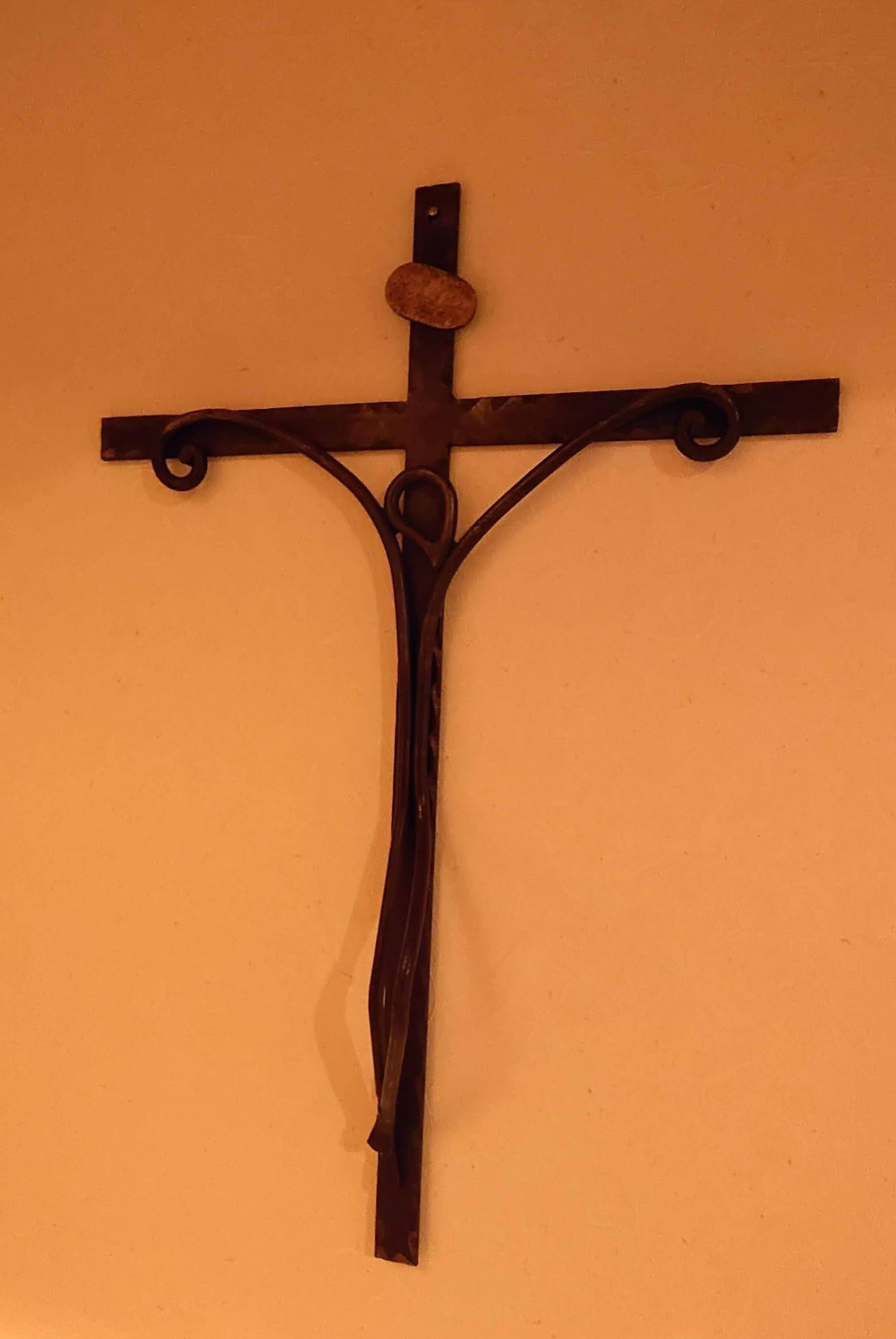A Cross from Rome

Approximately two thousand years ago, in Israel under the rule of the Roman Empire, Jesus Christ drew his last breath upon a wooden cross and, as we now see in our chapel, was resurrected three days later. The cross, which can be considered a symbol of Christianity, has its etymological origins in Latin, where "crux" signifies torture, while in English, "cross" conveys the idea of intersection and communion. Theologically, it represents forgiveness of sins, suffering, and victory over sin and death. I pondered for a while on what the cross means to me, and I finally think I've found my answer. But that comes later.
On a hot Sunday at the end of August, a man from Rome came to our church and said, "I would like to see the iron cross that I donated to this church about three years ago; I am the sculptor who made it." He explained that he had visited this church once more than twenty years ago, and his impression of it was so wonderful. He used to be an architect by trade, but later decided to become a sculptor with the desire to pursue the path of art. The result of this journey was the iron cross pictured here. He chose to donate it to our church, which he had only visited once before. He mentioned that the sculptor he greatly admires is Michelangelo. However, don't you agree that the simplicity and abstract design of this iron cross, which represents the humility of Jesus Christ as the artist intends, resonate in our hearts?
Now, the search for this cross within our church began with the help of several people. It was not found in any of the cathedral's rooms or in the sacristy. Perhaps we thought it was in the Catholic Center, so we made another attempt the following Monday. With the assistance of the staff, we finally found it in a priest's living quarter. Later, the bishop promised us to move it to the bishop's office so that it would be visible and admired by many of his visitors.
Now, this Roman sculptor, Pierluigi Monciniart, expressed his desire to meet an Italian missionary from his home country (he had a specific reason). God's intervention was evident when the plans of the Fujita couple, who drove us, and Father Narciso quickly fell into place, and we were able to meet Father Narciso at Sunagawa Church. Father Narciso has been a missionary in Hokkaido for nearly sixty years. He came from Verona, and his family operates a winery there. He graciously hosted four of us with delicious wine, Italian coffee, local cheese, and his piano playing. However, the most important part was his prayers in Italian for Pierluigi's deceased brother three years ago in September (the month of his passing) and for Mr. Fujita's speedy recovery from his illness, as he was battling cancer. One of the Fujita couple's daughters operates a restaurant in Milan with her Italian husband, and just recently, Father Rey, assigned to the Vatican a few months ago from Sapporo, visited this restaurant with his friends. Father Rey and Father Narciso are both well-acquainted with each other, as they are both in the Franciscan order. The circles from this cross continue to spread like ripples in water. I wonder what the father who is an expert in Christian arts and the artist will talk about when they meet in Rome? In adding to this episode, Pierluigi, the sculptor, promised Father Narciso to create another cross for his church in the near future.
The story has become rather long. The answer is "communion." In Japanese, the character, with two stroke counts for "person" 人 symbolizes supporting each other, while the first character "ten" 十, meaning the cross, represents intersection. This intersection may be between Jesus and me, or another person and me. It's a very proactive thing. In Japanese society, which places importance on the "space" between people in interpersonal relationships, such proactive involvement is often considered as interfering or hypocritical and may be disliked. However, the Lord swiftly departed from villages that did not accept Him and left with His disciples. Inspired by the Lord's cross, I too want to cherish communion with others, without fear of departing from it if necessary, and continue to live in that manner.
You may visit and find Pierluigi's ART COLLECTION here.
Yoko Martha Otake Sept. 10, 2023